A need for larger oyster dredging boats led to the development of the fast, sleek bugeye
Built in 1896 by James T. Marsh at Solomons, Maryland, Louise Travers was one of the last Marsh-built bugeyes in existence when she was measured in 1986. Bugeyes were a hybrid of existing Chesapeake Bay oyster dredging boats, developed in the 1860s – 1870s creating a larger boat that had a shallow draft, low bulwarks, could be handled by a smaller crew, with large deck space, and large sails to help drag the heavy oyster dredges. She had a movable centerboard that could be pulled up to allow her to dredge over shallow oyster beds, but extended to be more stable in deeper waters. The design is derived from earlier log canoes, and early bugeyes were built of logs, although later ones such as Louise Travers were frame built.
The ship had a number of owners, operating for over 50 years, at times having different engines installed and masts removed for cargo hauling. At some point, her hull was sheathed in galvanized steel to reduce leaks and stave off rot. In 1978 she was purchased for use as a vegetable stand in the Maine Avenue Fish Market in Washington D.C. She was returned to Solomons, Maryland by the Calvert Marine Museum in 1984 in hopes she could be preserved, but the deterioration was too substantial to economically repair. The museum contacted the Historic American Engineering Record to document her, after which she was destroyed.[1]
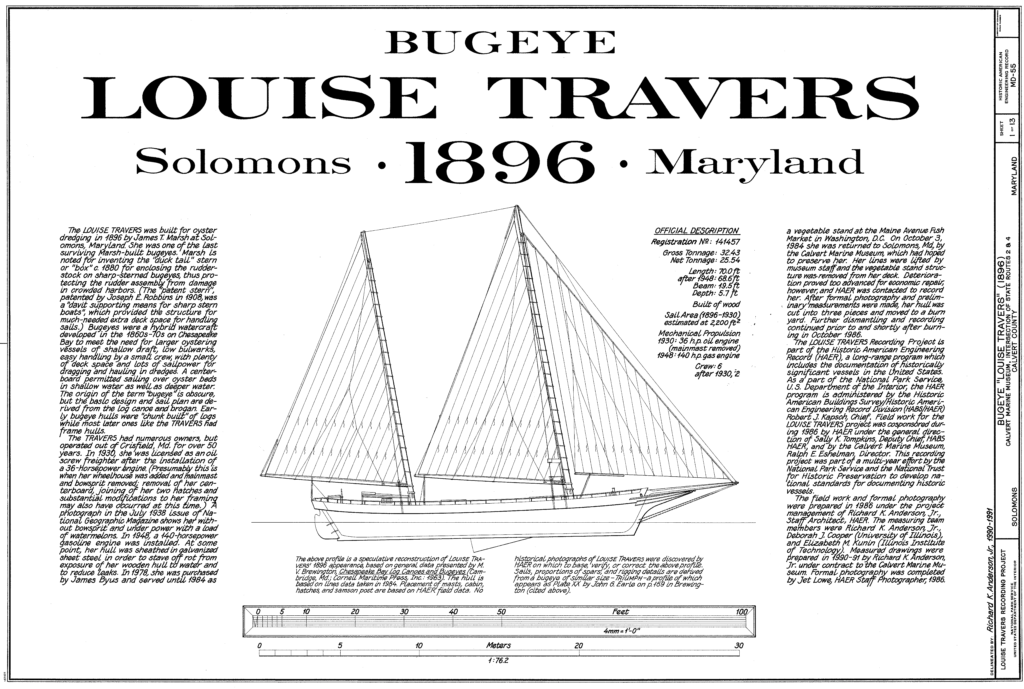
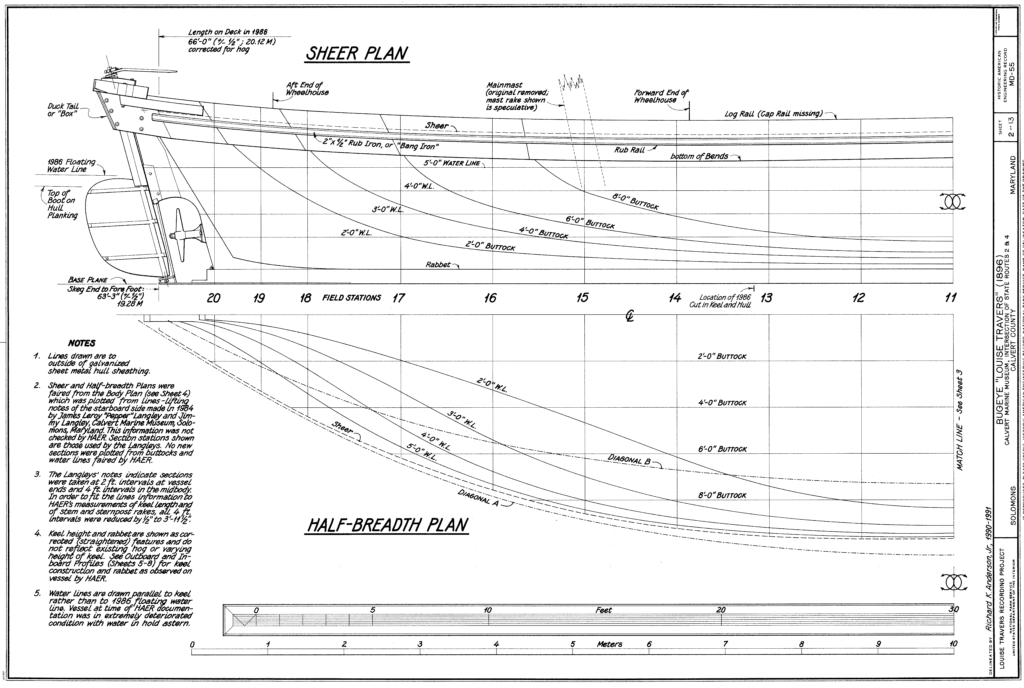
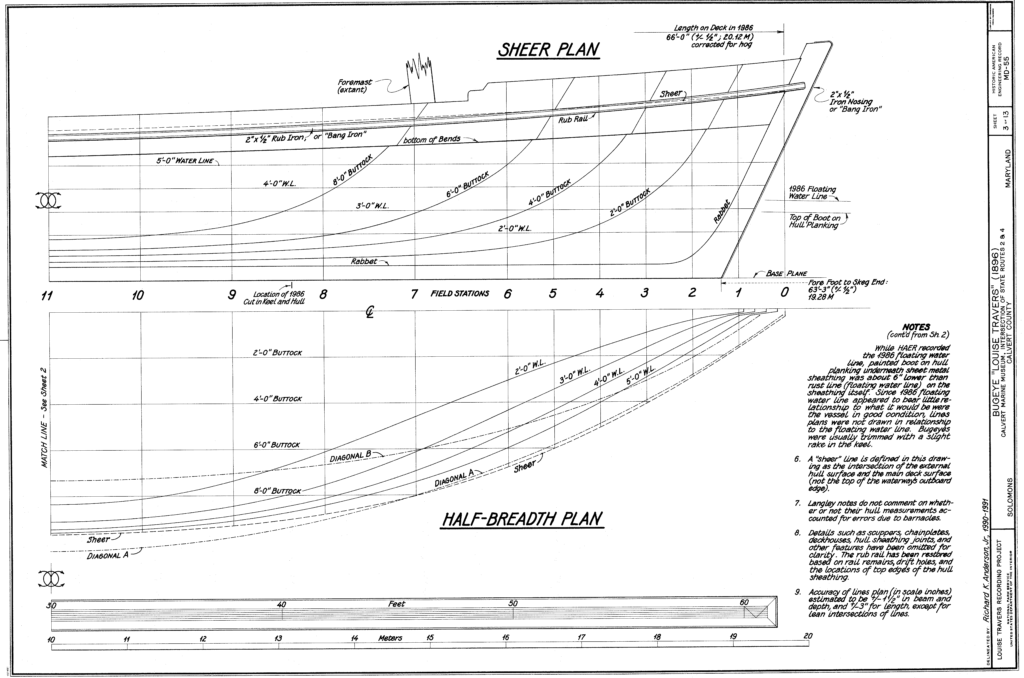
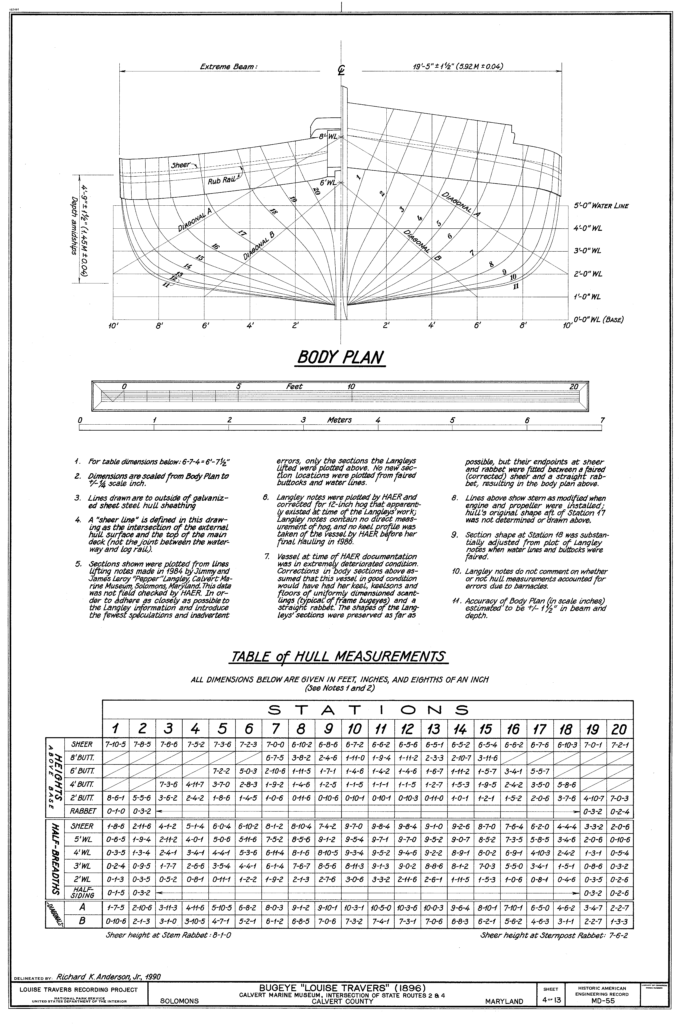
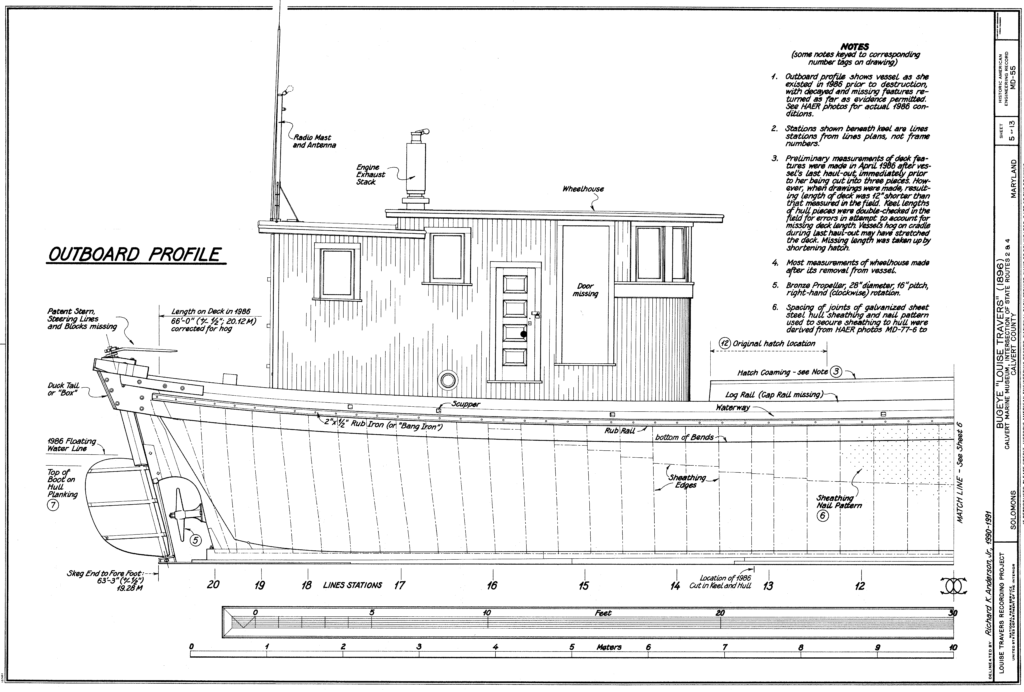
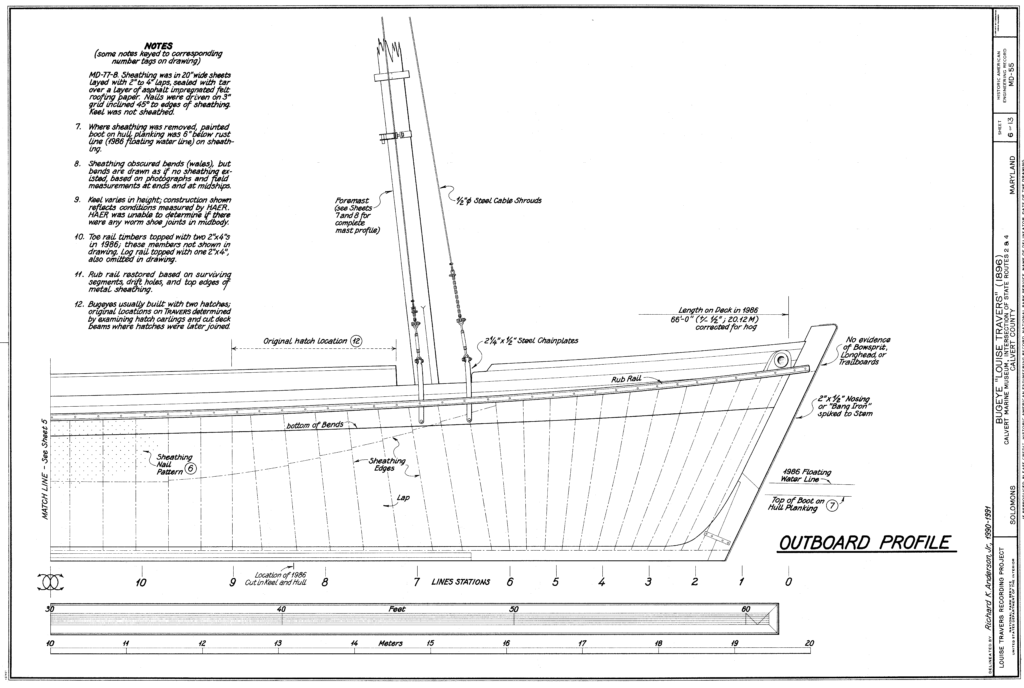
[1] The Historic American Engineering Record is a project of the National Park Service. The field work was prepared in 1986 under the project management of Richard K. Anderson, Jr., staff architect at HAER. The measuring team members included Deborah J. Cooper, University of Illinois and Elizabeth M. Kunin, Illinois Institute of Technology. Measured drawings were prepared in 1990-91 by Richard K. Anderson, Jr. Photography was completed by Jet Lowe, HAER staff photographer in 1986. Gurther information can be found in the Library of Congress, HAER record number MD-55.